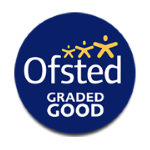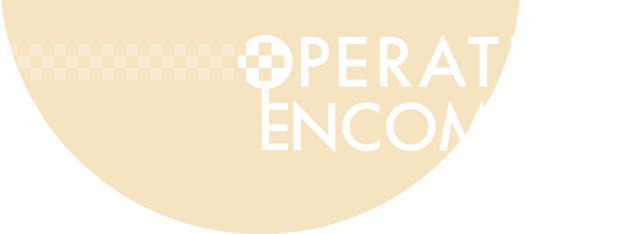PE
Curriculum (PE)
-
 Athletics Progression Journey - All Years
Athletics Progression Journey - All Years -
 PE Long Term Plan 2024-25
PE Long Term Plan 2024-25 -
 PE vocabulary - Athletics
PE vocabulary - Athletics -
 PE Vocabulary - Ball Skills
PE Vocabulary - Ball Skills -
 PE Vocabulary - Cricket
PE Vocabulary - Cricket -
 PE vocabulary - Dance
PE vocabulary - Dance -
 PE Vocabulary - Football
PE Vocabulary - Football -
 PE Vocabulary - Invasion Games
PE Vocabulary - Invasion Games -
 PE vocabulary - Yoga
PE vocabulary - Yoga -
 Striking and Fielding Progression ladders ...
Striking and Fielding Progression ladders ... -
 Y3 Athletics Knowledge Organiser
Y3 Athletics Knowledge Organiser
Our PE Curriculum
Our PE curriculum follows the Get Set 4PE planning. Staff are able to use the resources from Get Set 4PE in their planning and delivery of the PE curriculum. Every class from Year 1 to Year 6 receives two PE lessons per week, usually comprising of one indoor and one outdoor lesson.
Within our PE lessons we aim to:
Follow a sequential, developmental curriculum that progressively builds on past experiences and incorporates new experiences when children are ready. Lessons are not simply selected randomly with no obvious connections to past and future lessons, or just as a way to keep children “busy, happy or good” for 60 minutes.
Physical education is a moving experience. We aim to find ways to actively engage all children in moderate to vigorous physical activity for the majority of every lesson, a minimum of 75%.
In addition to being actively engaged, children also need plenty of opportunities to practice the skill or concept being taught that day. Our quality programme will provide many practice opportunities, sometimes alone, sometimes with a partner and sometimes during small sided games in groups.
As well as copious practice periods, we aim to plan lessons so that youngsters of all abilities have high rates of success. When children, particularly unskilled pupils experience success, they are more likely to continue practising and working to improve than when they fail continually.
We try to promote successful learning experiences in a warm environment in which children are encouraged to practice new skills and improve their fitness levels without feeling embarrassed.
We aim to make sure all our classes as much fun as possible so that children enjoy and look forward to PE, both at primary and when they start at secondary school.
The new National PE Curriculum (in England) came into force in September 2014.
Purpose of study
A high-quality physical education curriculum inspires all pupils to succeed and excel in competitive sport and other physically demanding activities. It should provide opportunities for pupils to become physically confident in a way which supports their health and fitness. Opportunities to compete in sport and other activities build character and help to embed values such as fairness and respect.
Aims
The national curriculum for physical education aims to ensure that all pupils:
develop competence to excel in a broad range of physical activities
are physically active for sustained periods of time
engage in competitive sports and activities
lead healthy, active lives
Attainment targets
By the end of each key stage, pupils are expected to know, apply and understand the matters, skills and processes specified in the relevant programme of study.
Subject content
Key Stage 1
Pupils should develop fundamental movement skills, become increasingly competent and confident and access a broad range of opportunities to extend their agility, balance and coordination, individually and with others. They should be able to engage in competitive (both against self and against others) and co-operative physical activities, in a range of increasingly challenging situations.
Pupils should be taught to:
master basic movements including running, jumping, throwing and catching, as well as developing balance, agility and co-ordination, and begin to apply these in a range of activities
participate in team games, developing simple tactics for attacking and defending
perform dances using simple movement patterns
Key Stage 2
Pupils should continue to apply and develop a broader range of skills, learning how to use them in different ways and to link them to make actions and sequences of movement. They should enjoy communicating, collaborating and competing with each other. They should develop an understanding of how to improve in different physical activities and sports and learn how to evaluate and recognise their own success.
Pupils should be taught to:
use running, jumping, throwing and catching in isolation and in combination
play competitive games, modified where appropriate [for example, badminton, basketball, cricket, football, hockey, netball, rounders and tennis], and apply basic principles suitable for attacking and defending
develop flexibility, strength, technique, control and balance [for example, through athletics and gymnastics]
perform dances using a range of movement patterns
take part in outdoor and adventurous activity challenges both individually and within a team
compare their performances with previous ones and demonstrate improvement to achieve their personal best
Swimming and Water Safety
All schools must provide swimming instruction either in key stage 1 or key stage 2.
In particular, pupils should be taught to:
swim competently, confidently and proficiently over a distance of at least 25 metres
use a range of strokes effectively [for example, front crawl, backstroke and breaststroke]
perform safe self-rescue in different water-based situations




